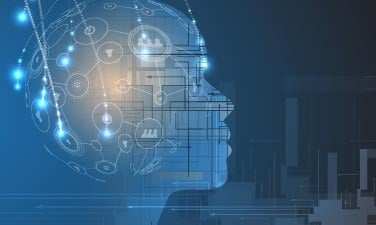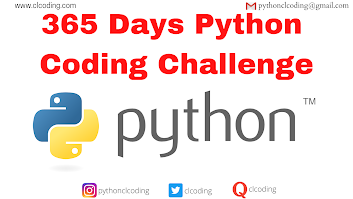Machine learning (ML) is one of the most in-demand skills in tech today — whether you want to build predictive models, automate decisions, or power intelligent applications. But for many beginners, the path from theory to real-world implementation can be confusing: “Where do I start?”, “How do I prepare data?”, “What do model metrics mean?”, “How do I deploy models?”
That’s exactly the gap Machine Learning with Python from The CodeCraft Series aims to fill. It’s designed to help readers learn machine learning step-by-step with Python — emphasizing practical projects, clear explanations, and real-world workflows rather than only academic theory.
Whether you’re a student, programmer, or professional pivoting into ML, this book serves as a friendly and hands-on guide to building actual machine-learning solutions.
What You’ll Learn — A Roadmap to Real ML Skills
This book starts with the basics and progressively builds toward more advanced and applied topics. Here’s a breakdown of its key themes:
1. Getting Started with Python for Machine Learning
Before diving into ML models, you need a reliable foundation. The book introduces:
-
Python fundamentals for data science
-
How to use essential libraries like NumPy, pandas, scikit-learn, and matplotlib
-
How to clean and preprocess data — a critical step most beginners overlook
This ensures you’re ready to work with data like a practitioner, not just a theorist.
2. Exploring and Understanding Data
Machine learning works on data — and good results start with good data analysis. You’ll learn to:
-
Summarize and visualize datasets
-
Identify patterns, outliers, and relationships
-
Understand correlations and distributions
-
Prepare data for modeling
This step is essential because poor data understanding leads to poor models.
3. Building Your First Machine Learning Models
Once data is ready, you’ll explore real ML algorithms:
-
Regression models for predicting numerical values
-
Classification models for categorizing data
-
Decision trees, nearest neighbors, logistic regression, and more
-
Training, testing, and validating models properly
Each algorithm is explained in context, with code examples showing how to implement it in Python and interpret results.
4. Evaluating and Tuning Models
Building a model is just the beginning — you need to make sure it works well. The book teaches:
-
Model performance metrics (accuracy, precision, recall, F1 score, RMSE, etc.)
-
How to avoid overfitting and underfitting
-
Cross-validation and hyperparameter tuning
-
Confusion matrices and ROC curves
This gives you the skills to make models not just functional, but effective and reliable.
5. Real-World Projects and Use Cases
What separates a beginner from a practitioner is project experience. This book helps you build:
-
End-to-end workflows from raw data to deployed insights
-
Practical examples like customer churn prediction, sales forecasting, sentiment analysis, etc.
-
Workflows that mimic real industry tasks (data preprocessing → modeling → evaluation → interpretation)
These projects help reinforce learning and give you portfolio-worthy experience.
6. Beyond Basics — Next Steps in ML
Once you’ve mastered foundational models, the book also touches on:
-
Advanced models and techniques
-
How to integrate models into applications
-
Best practices for production level ML workflows
While not a replacement for advanced deep-learning books, it provides the stepping stones needed to move confidently forward.
Who This Book Is For
This book is especially valuable if you are:
- A beginner in machine learning — no prior experience required
- A Python programmer looking to add ML skills
- A student or analyst aiming to build real predictive models
- A budding data scientist who wants project-focused learning
- Professionals pivoting into AI/ML careers
- Hobbyists who want to turn data into actionable insights
It’s designed to be friendly and approachable — but also deep enough to give you practical, real workflows you can use in real projects or jobs.
Why This Book Is Valuable — Its Strengths
Beginner-Friendly and Practical
Instead of overwhelming you with formulas, it focuses on how to build models that work using real code and real data.
Hands-On Python Guidance
You get practical Python code templates using the most popular ML libraries — code you can reuse and adapt.
Focus on Real Problems
Most exercises are built around realistic datasets and real business questions — not contrived textbook problems.
Project-Based Approach
The book emphasizes building working projects — a huge advantage if you want to use what you learn professionally.
Builds Good ML Habits
From data preprocessing to evaluation and debugging, it teaches how ML is done in industry — not just what the algorithms are.
What to Expect — Challenges & Tips
-
Practice is essential. Reading is just the first step; real learning comes from writing and debugging code.
-
Data cleaning can be tedious, but it’s the most valuable part of the workflow — embrace it.
-
Progressive difficulty. The book scales from easy to more complex topics; don’t rush — mastery requires patience.
-
Extend learning. After this foundation, you can explore advanced topics like deep learning, NLP, or big-data ML.
How This Book Can Boost Your Career
Once you’ve worked through it, you’ll be able to:
- Confidently wrangle and clean real datasets
- Build and evaluate ML models using Python
- Interpret model results and understand their limitations
- Present insights with visualizations and metrics
- Solve real business problems using machine learning
- Build a portfolio of data science projects
These are exactly the skills hiring managers seek for roles like:
-
Junior Data Scientist
-
Machine Learning Engineer (Entry-Level)
-
Data Analyst with ML skills
-
AI Developer Intern
-
Freelance Data Practitioner
Hard Copy: Machine Learning with Python: A Beginner-Friendly Guide to Building Real-World ML Models (The CodeCraft Series)
Kindle: Machine Learning with Python: A Beginner-Friendly Guide to Building Real-World ML Models (The CodeCraft Series)
Conclusion
Machine Learning with Python: A Beginner-Friendly Guide to Building Real-World ML Models is more than just a book — it’s a practical learning experience. It empowers beginners to move beyond textbook examples into building actual predictive systems using Python.
By blending theory with real projects and clear code walkthroughs, it makes machine learning approachable, understandable, and actionable — a perfect launchpad for your AI and data science journey.


















.png)






.png)























